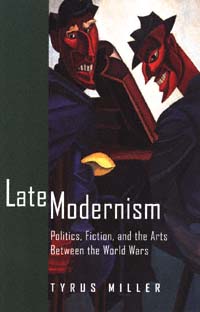Chapter 6 More Or Less Silent Mina Loy's Novel Insel
1. Mina Loy, Insel , ed. Elizabeth Arnold (Santa Rosa: Black Sparrow Press, 1991), 103.
2. For the biographical background to Loy's composition of Insel , see Carolyn Burke, Becoming Modern: The Life of Mina Loy (Berkeley: University of California Press, 1996), 359-384.
3. Mina Loy, The Last Lunar Baedeker , ed. Roger Conover (Highlands, N.C.: Jargon, 1982), 311.
4. William Carlos Williams, The Autobiography of William Carlos Williams (New York: New Directions, 1948 / 1949 / 1951), 319.
5. Beckett to MacGreevy, 20 December 1931, quoted in James Knowlson, Damned to Fame: The Life of Samuel Beckett (New York: Simon & Schuster, 1996), 142.
6. Hugh Ford, Published in Paris: American and British Writers, Printers, and Publishers in Paris , 1920-1939 (Yonkers, N.Y.: Pushcart, 1975), 365-366.
7. Herbert Marcuse, Der deutsche Künstlerroman , in Schriften I (Frankfurt am Main: Suhrkamp, 1978), 17-18. My translation.
8. See also Theodor W. Adorno, "Jene zwanziger Jahre," in Kulturkritik und Gesellschaft II ( Gesammelte Schriften 10/2) (Frankfurt am Main: Suhrkamp Verlag, 1977), 504-505: "With distance it can be observed that many artists, whose nimbus is equated with that of the twenties, had in that decade already passed their zenith; Kandinsky, probably also Picasso, Schönberg, even Klee. As unquestionably as Schönberg's twelve-tone technique emerged as the fully logical outcome of his own achievements . . . just so unquestionably is something of the best lost upon the shift to systematic principles." My translation.
9. Loy, quoted in Last Lunar Baedeker , lxxv.
10. Benjamin's essay appears in two versions in his Gesammelte Schriften I, ed. Rolf Tiedemann and Hermann Schweppenhäuser (Frankfurt am Main: Suhrkamp, 1974), 431-469, 471-508. It appears in English translation as "The Work of Art in the Age of Mechanical Reproduction," in Illuminations , ed. Hannah Arendt, trans. Harry Zohn (New York: Schocken Books, 1968), 217-251.
11. E. M. Forster, "Liberty in England," in Abinger Harvest (London: Edward Arnold & Co., 1936), 67.
12. Peggy Guggenheim, Out of this Century: Confessions of an Art Addict (New York: Universe Books, 1979), 67. See also the colorful account of the lamp shade business in Jacqueline Bograd Weld, Peggy: The Wayward Guggenheim (New York: E. P. Dutton, 1986), chap. 11; Laurence TacouRumney, Peggy Guggenheim: A Collector's Album (Paris: Flammarion, 1996), 58-59.
13. Mina Loy, The Lost Lunar Baedeker , ed. Roger L. Conover (New York: Farrar, Straus & Giroux, 1996), 151.
14. For the connection between mass culture and femininity in Weimar Germany, see the 1927 article by Siegfried Kracauer, "Die kleinen Ladenmädchen gehen ins Kino" ("The Little Shopgirls Go to the Movies") and "Das Ornament der Masse" ("The Mass Ornament''), in Das Ornament der Masse (Frankfurt am Main: Suhrkamp, 1963); English translation in Kracauer, The Mass Ornament: Weimar Essays , ed. and trans. Thomas Y. Levin (Cambridge: Cambridge University Press, 1995). See also Sabine Hake, "Girls and Crisis: The Other Side of Diversion," New German Critique 40 (1987): 147-164, and Patrice Petro's book-length study, Joyless Streets: Women and Melodramatic Representation in Weimar Germany (Princeton: Princeton University Press, 1989), esp. chap. 4, ''Weimar Cinema and the Female Spectator."

15. Roger Caillois, "La Mante Religieuse," Minotaure 5 (1934): 23-26, and "Mimétisme et Psychasthénie Légendaire," Minotaure 7 (1935): 4-10.